Albanians in Calabria? Those of you who have read my books and follow my blog are already aware of the great mix of peoples who have landed in the toe of the boot and made it their home. They brought language and culture with them, both melding with locals and hanging on to traditions. Civita in Calabria’s Pollino Mountains is one of numerous communities with roots that reach across ancient seas, all the way to Albania.
MY FIRST ENCOUNTER WITH CALABRIA’S ALBANIAN COMMUNITY
The first time I heard about the historic Albanian communities in Southern Italy was on the listening portion of a difficult Italian language exam. It was an official test for an international certification, and the listening, reading and speaking sections were meant to be as true to “real life” as possible, so it was a piece from an Italian radio program. Of course, there was a certain amount of static and “natural” background noise, and then there were my inevitable lulls of concentration during the 5- to 6-hour exam. I was doing my very best to focus, when I heard “Albania,” “immigranti,” “Calabria” and the “quindicesimo secolo.”
I had yet to visit Calabria, but my ears perked at “immigrants,” the “15th century” and the apparent fact that their descendants still spoke an Albanian language today. I completed the exam, passed the exam, and the subject didn’t enter my consciousness for several years. It was an intellectual exercise for which I was apparently up to snuff. But then I found myself living in Calabria and I began learning about its rich history with its many peoples…
CIVITA, CALABRIA – HISTORY
In Civita, Calabria, this history centers on an Albanian community fleeing from the Turks. While a precise arrival date is not known, the first Albanian explorers most likely came to the area in the 1470s. Shortly thereafter, the King of Naples officially granted the town site to a condottiero or military leader who brought in Albanian families. At the time of their arrival, this picturesque spot in the Pollino Mountains had been abandoned as the result of a devasting earthquake that rocked a vast territory from eastern Lazio to northern Calabria in 1456. Ironically, these displaced individuals had founded their community about 500 years earlier upon fleeing from Saracen attacks on the town of Cassano all’Ionio, to the east on the Ionian Sea.
The “new” arrivals brought their language and culture with them, settling throughout the Pollino Mountains, in other areas of Calabria and Southern Italy. This Albanian migration followed the death of their national hero Gjergj Kastrioti Skënderbeu, aka Skanderbeg (1405 – 1468), and the Ottoman conquest of the Byzantine Empire.
While some of these Arbëreshë communities, as they are called, have completely blended with the Italian culture, others, such as Civita, preserve the ethnolinguistic characteristics of the original Albanian settlers.
In Civita (Çifti in the Arbëresh language), there is no doubt as to the strong connection the local citizens feel with their history. Immediately upon entering the village, the visitor is greeted with a bust of Skanderbeg and a brightly colored mural of the hero with sword raised, together with townsfolk in traditional dress.

Murals of Skanderbeg in battle with Civita in the background, and the Arbëreshe in traditional dress
CIVITA, CALABRIA – ETHNIC MUSEUM OF ARBERESHE CULTURE
On my first visit to Civita, I started out at the town’s Ethnic Museum of Arbëreshë Culture, and who did I meet at the entrance, but the former Albanian ambassador to Italy! Neritan Ceka had visited Civita and other Arbëreshë communities on many occasions. His Italian was excellent and when I later looked at his business card, it turned out that he was an archeologist, as well. As we were talking, a busload of Italian tourists descended on the village and the group’s leader was ever so pleased for the opportune meeting with this foreign dignitary, who was pressed into duty and graciously gave an excellent ad-hoc tour of the little museum from the perspective of a modern Albanian. Clearly, Professor Ceka felt a close connection to these Southern Italian communities that shared his heritage.
Farm equipment, articles for the home, clothing, historical photographs and informational placards filled out the collection.
On the museum’s ground floor, there was a rather impressive range of books and other written material about the community, including numerous copies of the village’s magazine Katundi Ynë (Our Town). What a wealth of information regarding the Italo-Albanian culture, past and present, published in both Italian and Arbëreshe by Demetrio Emmanuele (who welcomed me to the museum) together with his daughter Stefania and others from the town.
CIVITA, CALABRIA – RELIGION AND ARCHITECTURE
In keeping with Civita’s history, the local religion and village architecture reflect Arbëreshe culture. Just off the main piazza stands the Italian-Albanian Mother Church dedicated to Santa Maria Assunta. Its parishioners follow the Byzantine rite as part of the Eparchy of Lungro, an Italo-Albanian diocese in Calabria, subject to the Holy See. The Baroque structure features many elements of the Byzantine church, such as the beautiful iconostasis in walnut and olivewood, numerous icons and frescos.
Civita maintains its original layout, with neighborhoods of old two-story stone houses with large fireplaces situated along narrow lanes. Interestingly, the facades of several homes resemble faces, with a long chimney for the nose and windows for eyes.
Today, they are referred to as “Case Kodra” in memory of Ibrahim Kodra, a 20th-century Albanian artist who brought out this playful element in his paintings of Civita. The house quasi morphs into a human face.
The chimney stacks are another characteristic of the village, each unique design giving that personal touch to the habitation.
CIVITA, CALABRIA – DRAMATIC NATURE
The Arbëreshë culture is certainly worthy of a visit to Civita in and of itself. However, this village of fewer than 1,000 also boasts the dramatic natural setting of northern Calabria’s Pollino Mountains, part of Italy’s largest national park. One of Civita’s highlights is the Gole del Raganello, a deep canyon carved by the Raganello River, which flows to the Ionian Sea. From Civita’s enviable position of 450 meters (1,480 feet), views of the expansive river valley extend all the way to the sea!
From the oldtown, you can hike down the side of the canyon or take a jeep to the Ponte del Diavolo. This Devil’s Bridge has the familiar tale of having been constructed by the devil in exchange for the life of the first soul who crosses it. Being cleverer than the diavolo himself, the local landowner who made the pact with the devil tricked him by sending a sheep, instead of a person, over the new structure. Today’s ponte is a 2005 refurbishment. The original was supposedly built in the 1500s, although the bridge which was destroyed in a violent storm in 1998 was apparently a reconstruction from 1840.
In any historic period, it’s a long drop to the bottom of the canyon.
VISITING CIVITA, CALABRIA
As you might imagine, a visit to Civita may include a hike in the area, or for the more adventurous, canyoning, which can be dangerous, so I would only consider such activities with a reputable guide. There are also various species of animals of which to catch a glimpse and even a falconry experience with an outfit called Setteventi del Pollino.
What you might not expect is a very chatty older gentleman who lived many years in the United States and has a pen collection from the many visitors he’s met in the piazza. On one occasion, he seemed rather pleased with a white plastic pen with a pink flamingo from Las Vegas’ Flamingo Hotel, but on another, rather disappointed that I didn’t want to part with the only writing implement in my purse.
Of course, between the culture, the natural beauty, the chitchat, and not to mention the hilly terrain, partaking of the local cuisine, an Arbëreshe twist on the Calabresi of the Pollino Mountains, is always a good idea.
And you never know who you’re going to meet in Civita. Guess who was at the next table as we sat down for a meal on my recent fall cultural tour? Nonother than Luigi de Magistris, former mayor of Naples with his lovely Calabrian wife. I quickly searched my purse for one of my bookmarks (my Calabria: The Other Italy calling card) and realized I had handed over my last one to someone just twenty minutes earlier. The Neapolitan magistrate-turned-politician was very gracious as we greeted each other with the newly popular elbow bump and exchanged a few pleasant words before lunch. Did I mention that Civita is one of the Borghi più belli d’Italia (Italy’s most beautiful villages)?
Note to self: When visiting Civita, Calabria, bring an ample supply of pens and “Calabria: The Other Italy” bookmarks.
Would you like to visit Civita? It’s on my CALABRIA CULTURAL TOUR – check out the detailed itinerary and get in touch!
Read all about the fascinating Calabrian region in my book Calabria: The Other Italy, described by Publisher’s Weekly as “an intoxicating blend of humor, joy, and reverence for this area in Italy’s deep south,” and explore Calabria’s northern neighbor in my book Basilicata: Authentic Italy, “recommended to readers who appreciate all things Italian” by the Library Journal.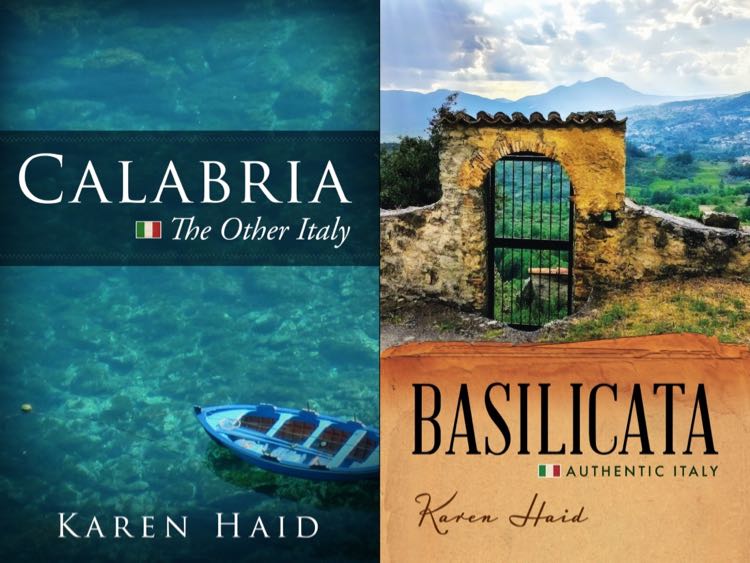
Follow me on social media: Basilicata Facebook page, Calabria: The Other Italy’s Facebook page, Karen’s Instagram and Karen’s Twitter for beautiful pictures and information.
Sign up below to receive the next blog post directly to your email for free.

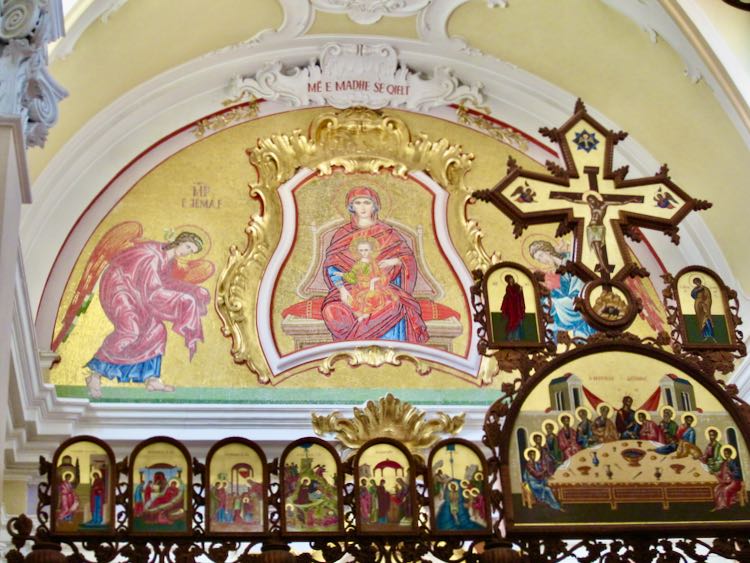



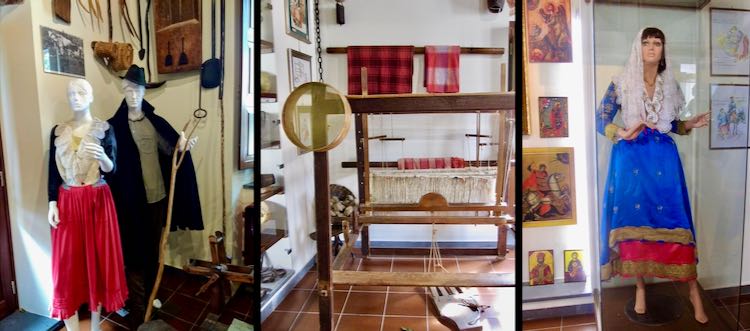

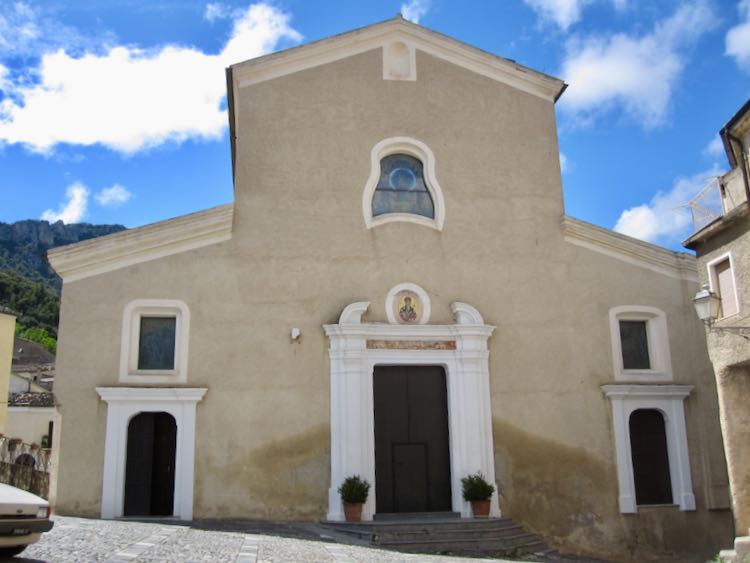
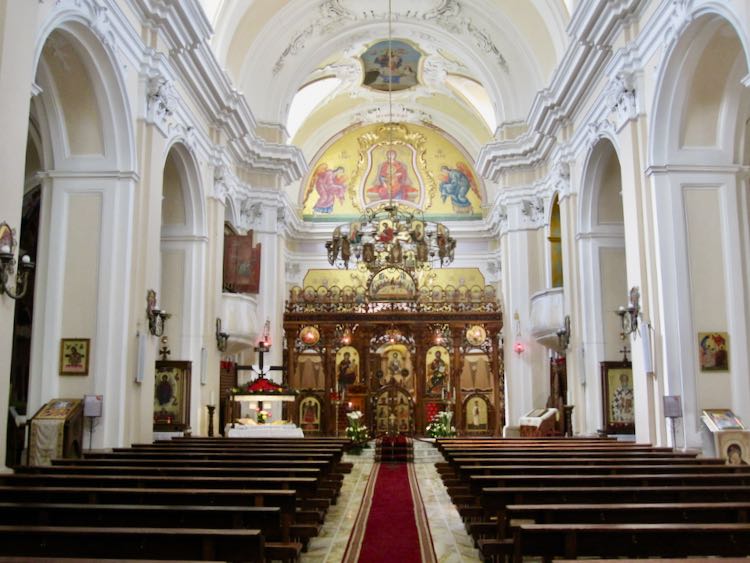

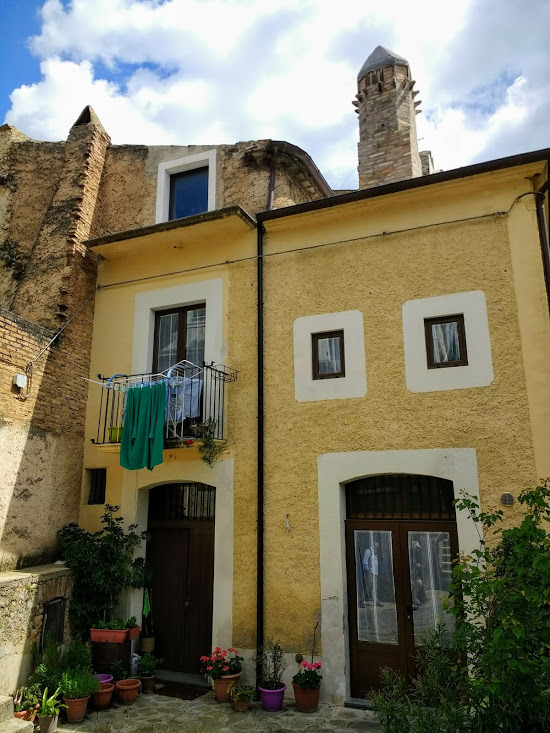



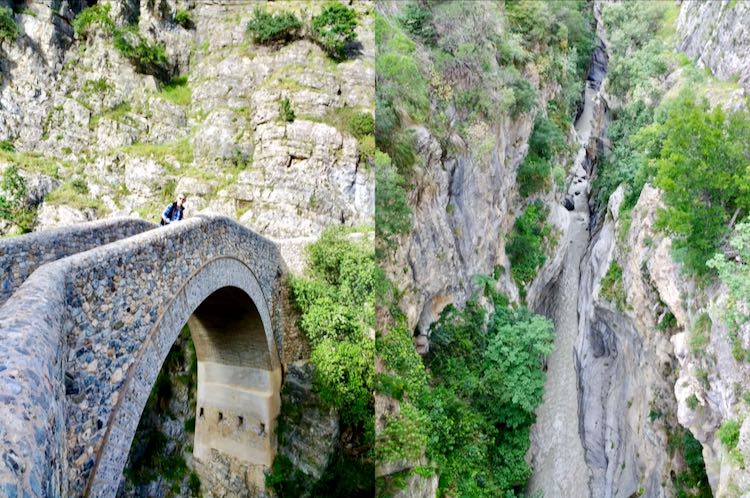



Comments 6
will you be doing any tours in fall 2022?
Author
Yes, planning for the fall. I will let you know soon.
Thank you…
Author
My pleasure.
Subscribing to your blog!
I was looking for Southern Italy trips thru Overseas Adventure Travel and came across your blog on Civita Calabria. I’ve been to Italy several times but never south of Rome. I’ve been interested in ‘the boot’ for a long time. I think I read that Matera was the 2019 Europe’s Capital of Culture. It also peaked my interest in the area. Would like to know if you give tours to this lovely and oh so different part of Italy. I’m looking to go in 2023.
Author
Yes, I do have tours, specifically to Calabria and Basilicata. We visit Civita on the Calabria Cultural Tour and Matera (a spectacular UNESCO World Heritage Site in addition to its selection as European Capital of Culture) on the Basilicata Cultural Tour. Southern Italy is full of lesser-known gems just waiting to be explored!